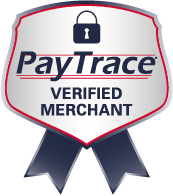When shoppers in physical stores put something in their shopping cart, it’s usually there to stay. The customer has committed to the idea of buying an item, and most of the time they will bring that item through to the checkout.
When those shoppers are at their computers, though, those traditional shopping habits go out the window. Items placed in a shopping cart offer no guarantee of a sale. Consumers place items in a virtual cart while they continue shopping for various reasons: to make sure they don’t lose track of the item, or to “hold it” while they consider whether they want to make the purchase. All too often, retailers see shoppers abandon their site and their filled shopping cart, turning an apparent conversion into a lost opportunity.
The only retail sales floor is littered with such abandoned carts. As much as this is a fact of life in the e-retail world, there are things businesses can do to minimize the occurrence rate of shopping cart abandonments. Successfully strategy can even bring some customers back to their once-abandoned carts, where they go on to complete the conversion. Here are four great strategies businesses should consider to cut down on shopping cart abandonments.
Shorten the Checkout Process
 How many times are consumers asked to click through to another step in the shopping process? The more clicks, the more opportunities they have to reconsider their purchase. If you go beyond two or three checkout steps, it’s also possible that consumers have become fatigued by the task of checking out online.
How many times are consumers asked to click through to another step in the shopping process? The more clicks, the more opportunities they have to reconsider their purchase. If you go beyond two or three checkout steps, it’s also possible that consumers have become fatigued by the task of checking out online.
Checkouts should be as simple as possible. You don’t want to do anything to discourage consumers from making a purchase, and you don’t want to give them extra time to develop buyer’s remorse. Whenever possible, condense checkout steps–even if that means combining two pages into one. Only ask for the most relevant information from customers. Simpler is always faster, and that will reduce your cart abandonment rates.
Allow Purchases From Guest Accounts
Some shopping sites only allow purchases from users who have registered an account. While it seems smart to have consumers register, it can backfire in terms of sales. Some shoppers simply don’t want to sign up with a new retailer and invite even more email into their inbox. It’s great to have a sign-in option, but always give shoppers the option to continue with the purchase as a guest.
Maximize Available Payment Options
 This one’s a no-brainer: if you only have one or two purchasing options, you’re going to lose sales opportunities. You’ll want to make sure you’re set up to take credit card payments from as many credit card providers as possible. Alternative options, including PayPal and mobile wallet payment options, will also be great–especially if you’re dealing with overseas sales. The bottom-line is, more options to purchase means you’ll turn away fewer consumers.
This one’s a no-brainer: if you only have one or two purchasing options, you’re going to lose sales opportunities. You’ll want to make sure you’re set up to take credit card payments from as many credit card providers as possible. Alternative options, including PayPal and mobile wallet payment options, will also be great–especially if you’re dealing with overseas sales. The bottom-line is, more options to purchase means you’ll turn away fewer consumers.
Bring Lost Conversions Back Through Retargeting
Sometimes it’s inevitable that a consumer will abandon their virtual cart. Fortunately, digital ad technology makes it easy to retarget those consumers through display ads. With this ad strategy in place, you can present multiple different retargeted ads to try and entice the customer back to your website. Other retargeting strategies are also available. If the abandoned cart was left under someone’s account, for example, you can use that person’s registration info–i.e., their email address–to send them retargeting content. This direct appeal to their purchasing interests could ultimately persuade them to return to your website and finish what they started. If you need help improving your website to reduce shopping cart abandonment rates, contact DBC Digital and get started on the path to higher sales.


